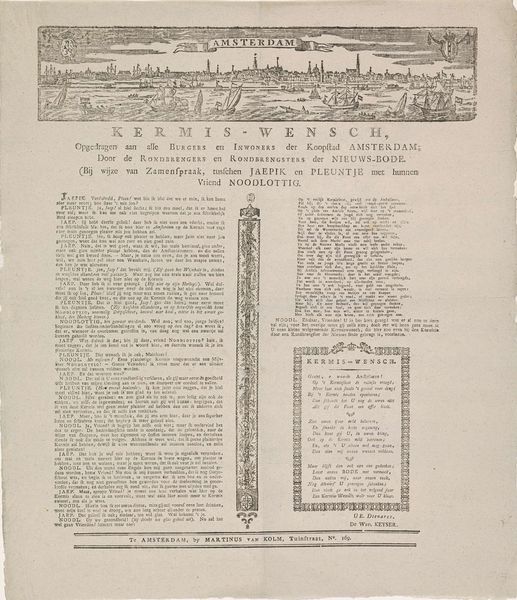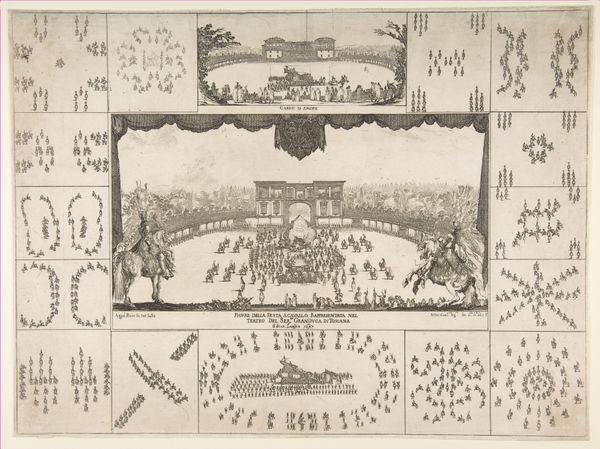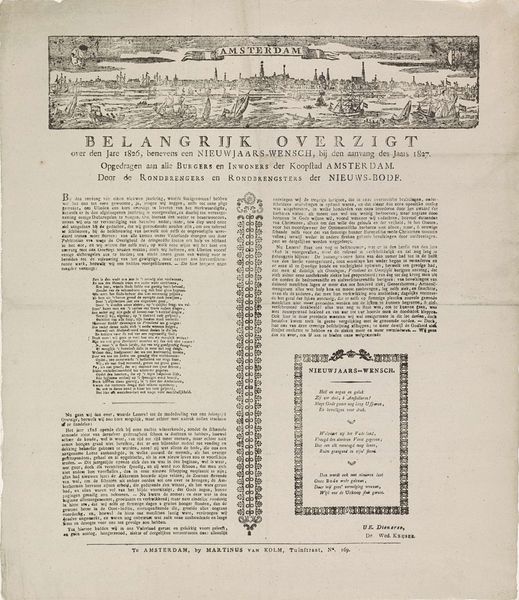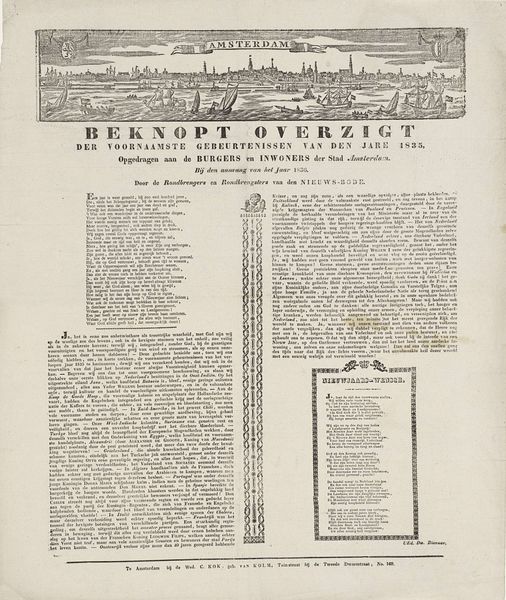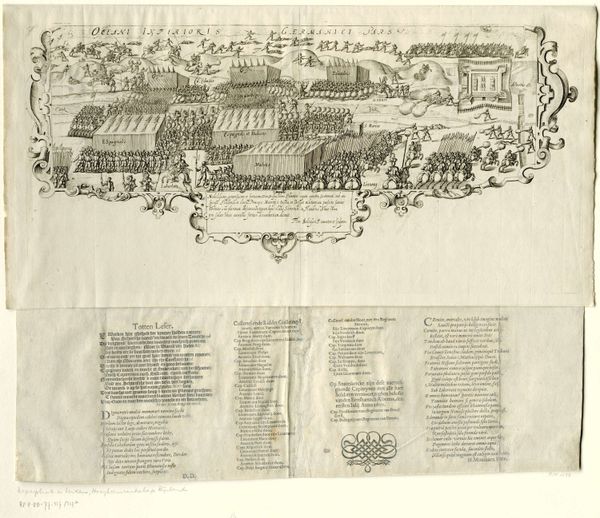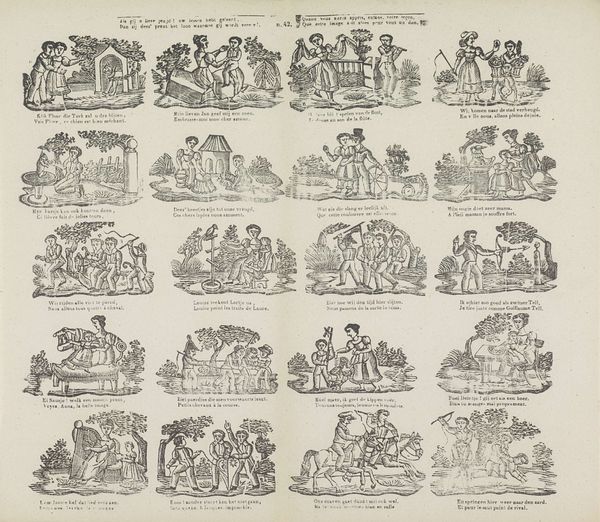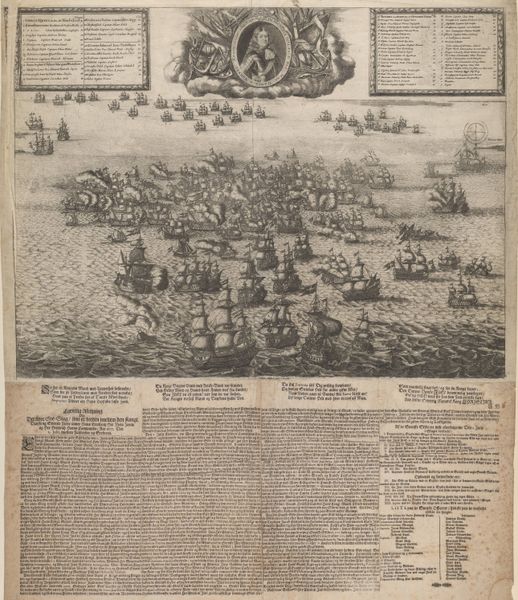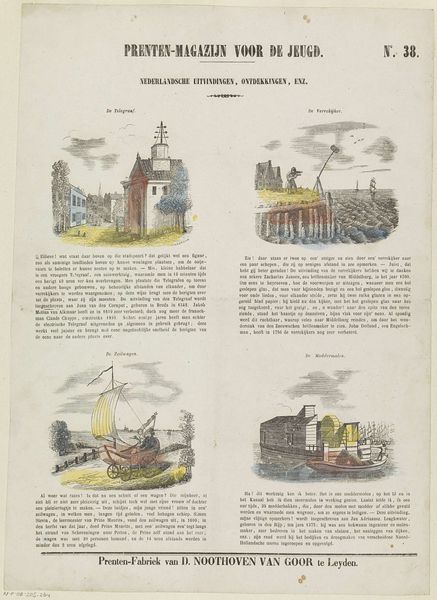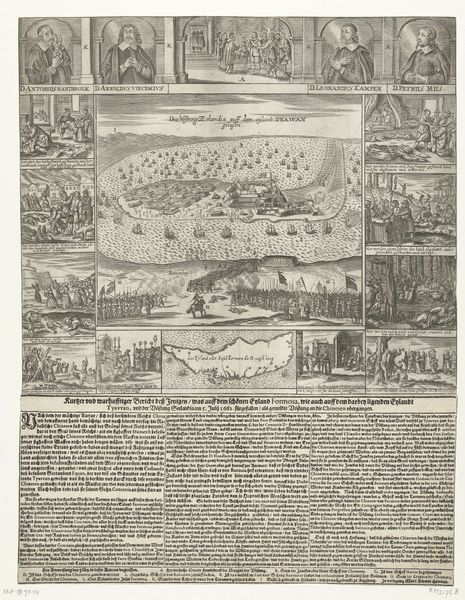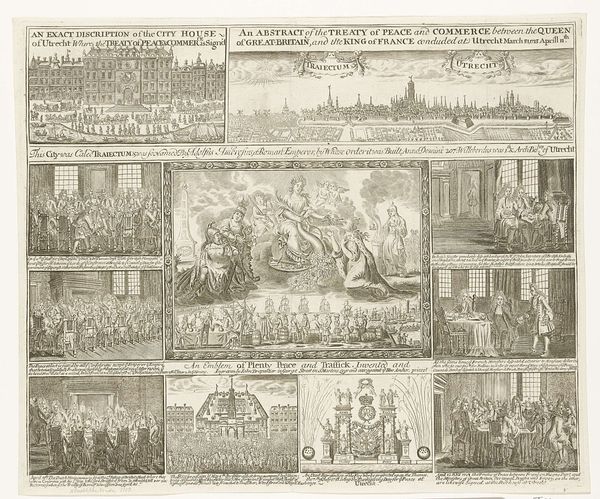
Intrede en inhuldiging van koning Willem II te Amsterdam 27-28 november 1840 (brief) 1840 - 1841
0:00
0:00
willemcharlesmagnenat
Rijksmuseum
print, engraving
# print
#
cityscape
#
history-painting
#
engraving
#
realism
Dimensions: height 220 mm, width 280 mm
Copyright: Rijks Museum: Open Domain
Curator: Looking at this detailed print, one can’t help but feel transported back to Amsterdam in 1840. It's entitled "Intrede en inhuldiging van koning Willem II te Amsterdam 27-28 november 1840 (brief)," depicting King Willem II's entry and inauguration. It's currently housed in the Rijksmuseum. Editor: Wow, what an incredibly detailed scene! My immediate reaction is a sense of almost overwhelming formality and precision. It's a bit like looking at an official document rather than just an artistic representation, I'd even call it almost bureaucratic, like every figure and building is precisely placed to communicate unwavering power and civic order. Curator: I agree. Its realistic style, rendered through meticulous engraving, speaks volumes about the desire to meticulously document and thus immortalize the historical moment. And it being a print ensures a wider audience could see this imagery and internalize its symbolism, don't you think? Editor: Absolutely. The symbolic weight is all over it, I'd argue. From the architecture of the city celebrating its king to the sheer mass of people participating, it projects an image of united allegiance. Those repeated architectural details are really something: they suggest strength and continuity. I wonder if viewers back then found all the repetition boring or reaffirming, or perhaps both? Curator: Interesting point! The cityscape itself plays a critical role. Beyond its immediate architectural details, the use of engraving in depicting such clear procession lines conveys order and stability in this key transition moment for the country. What do you make of the medium? How does engraving shape the artwork's impact, from your view? Editor: For me, it suggests precision, a conscious attempt at truth-telling through sheer meticulousness. While brushstrokes can evoke emotion, the engraving commits to objective documentation. But there is also this interesting dichotomy between objective documentation, but the artistic rendering—in the very conscious depiction of people and settings. Curator: This has certainly given me a lot to ponder about. How an artwork's apparent message is not always its complete, or true message, for that matter... Editor: Indeed, all these tiny details invite us to look at this moment in history with a touch more nuance!
Comments
No comments
Be the first to comment and join the conversation on the ultimate creative platform.
